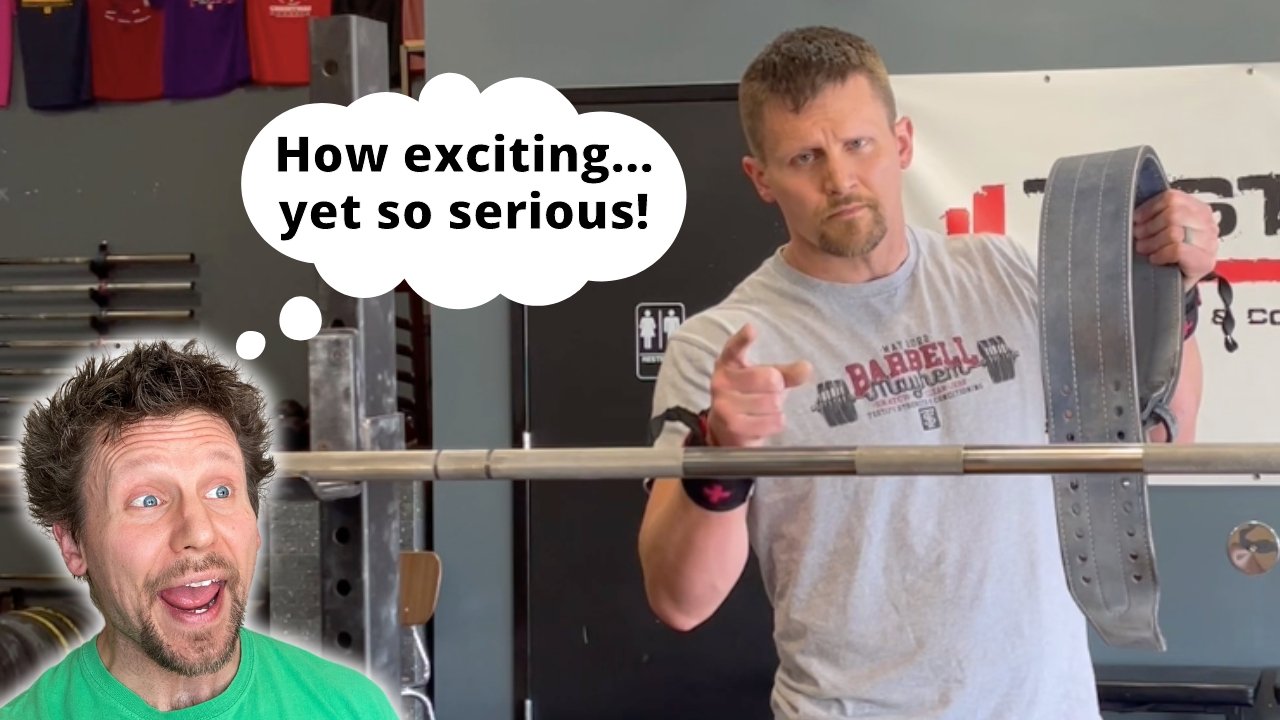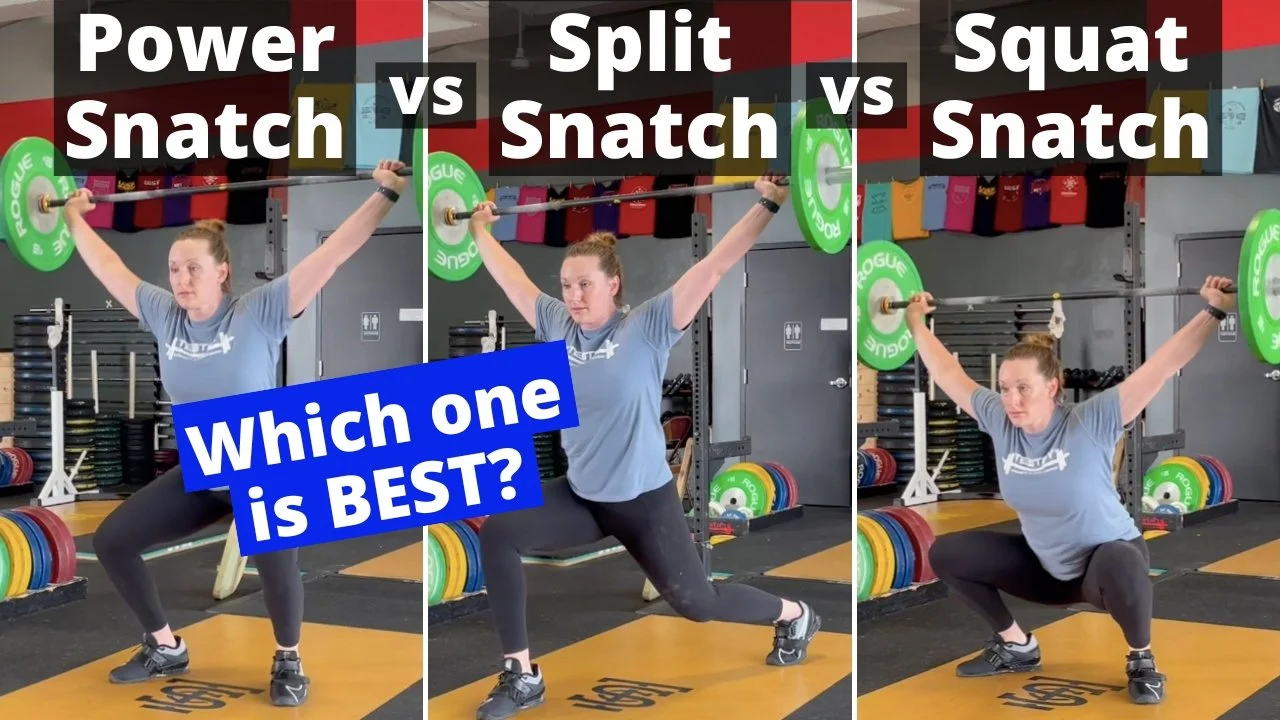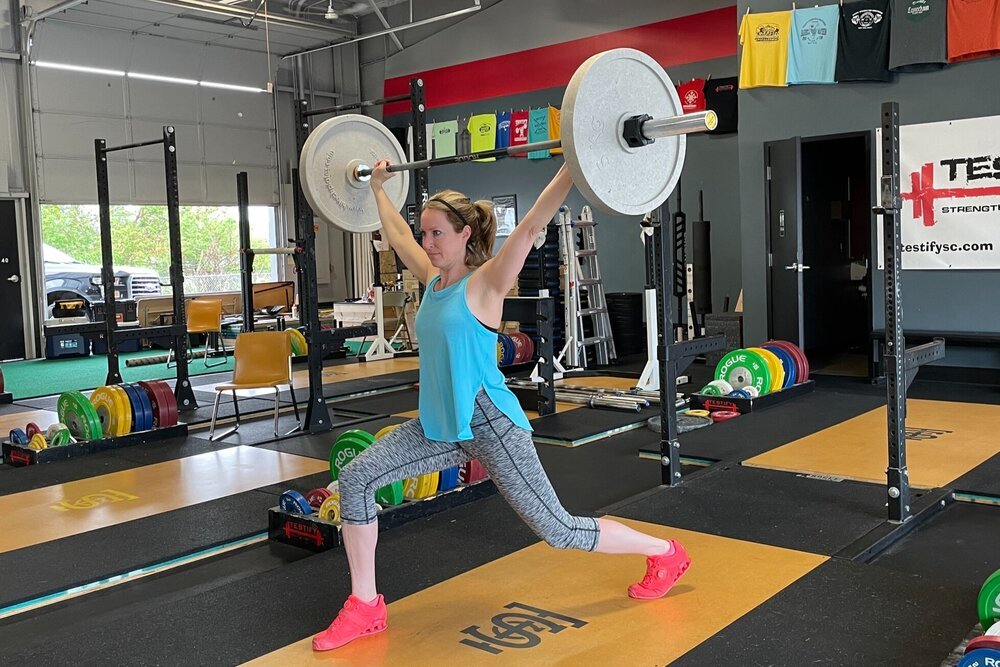Testify Review - July 17, 2023
/THIS WEEK'S SUBMISSION
From our video Bench Pressing Alone (safely!) and How to Unrack a Heavy Bench Press (click the title to watch):
Sjors Provoost
I always find myself precisely positioning the bench relative to the power rack and my position on the bench in order to ensure I don't waste a huge amount of energy on the unrack process. But this might be easier...
Phil
I hope it proves useful for you. People who bench on their own will typically line up a little bit closer to the hooks than does someone who gets a handoff from a spotter, but of course, the problem/trade-off is that if you line up too close, you put yourself in a precarious position of potentially benching up into the underside of the hooks, which is a real bad situation in which to find yourself.
ARTICLES & VIDEOS
The Sad Story of the Worst Squat Technique Ever
Want the history of the worst squat technique ever to be suggested by a coach? Watch and learn. Click here to watch.
Bench Press SECRET Every Lifter Should LEARN
What's the worst mistake on the bench press? It's not what you think. Click here to watch.
Everything You Need to Know About Lifting Belts . . . QUICK!
Phil covers the 4 Ws of lifting belts: width of belts, when to use one, where to wear your belt, and what to do once it's on. Click here to read.
Blast from the Past: Why Your Grandma Needs to Lift
Why do we focus so much on strength, and how does a high school math & physics teacher end up coaching people with barbells? Phil discusses the importance of strength and why it's life-changing. Click here to watch.
Blast from the Past: The Snatch: Landing Positions
Phil covers the three different landing positions for the snatch as well as the advantages that go with each position. Click here to read.
NEW TESTIFY GEAR!
Baseball season is here, and so is Testify’s new 3/4 raglan shirt - in multiple colors! Get yours today and represent your favorite gym!
Click here to head to the Testify Store.
WHAT'S COMING UP
Below are a few of our upcoming events, and you can find out what else is on the calendar by heading to our events page at www.testifysc.com/events.
Deadapalooza! The Annual Testify Deadlift Festival
August 25, 2023
Deadapalooza is a strength meet wherein the only contested lift is - you guessed it - the deadlift. There will be one bar (possibly multiple bars if numbers dictate), and the meet will be conducted in a "rising bar" format, so the weight on the bar only goes up! It's a ton of fun, so come on out!
Click here to register or for more information.
Starting Strength Self-Sufficient Lifter Camp
September 23, 2023
Spend the day learning the Squat, Press, and Deadlift and how to self-evaluate your lifts while training in your garage or commercial gym without a coach.
Click here to register or for more information.
Testify Fall Classic
October 21, 2023
The Testify Fall Classic is back for 2023, and we invite you to be a part of it! This is a strengthlifting meet, which means the contested lifts will be the squat, press, and deadlift.
Click here to register or for more information.
THIS WEEK’S CONDITIONING
Option 1
Sled Pyramid – 4, 5, or 6 tiers
Go up and down a 4, 5, or 6 tier “sled pyramid” – rest as needed. The distance for each round is 80 m indoors (a down-back on the 40m course) or 200 ft outdoors (2 down-backs on the 50 ft course). Rest as needed.
For example, Bob does the following (4 tiers):
Round 1: Empty sled
Round 2: 25#
Round 3: 50#
Round 4: 75#
Round 5: 50#
Round 6: 25#
Round 7: Empty sled
Compare to 2023.05.15.
Option 2
Bike/row:
8 x 30 sec on/2:00 off
Score = least distance covered in any 30 second interval
Compare to 2023.04.24.
Option 3
5-10 rounds:
50 ft yoke carry
50 ft yoke push
100 ft sandbag carry and S.O.B. (sandbag-over-bar)
Perform 1 round every 2-3 minutes.
Compare to 2023.03.27.
Option 4
Row/Tire 10 min ladder:
2 cal row
2 tire flips
4 cal row
4 tire flips
6 cal row
6 tire flips
…
Climb the ladder as high as possible in 10 minutes.
Compare to 2023.03.27.
Bench Press SECRET Every Lifter Should LEARN
/What's the worst mistake on the bench press? It's not what you think.
At Testify, we offer small group training, private coaching (in-person or remotely via Zoom), online coaching, and form checks. Click the button below to get quality coaching from a Starting Strength Coach and start getting stronger TODAY.
Everything You Need to Know About Lifting Belts . . . QUICK!
/Today’s topic is a quick dive into lifting belts - specifically, the four Ws of belts: width, when, where, and what. We covered how to efficiently and quickly put on your belt in another article about a month back, so feel free to click here to read that article or watch the associated videos.
Width
If you can get your back set in rigid and flat extension on the deadlift using a 4” belt (i.e., the belt is 4” wide), then go ahead and get a 4” belt. If you can’t, then you probably need to go with a 3” belt. It’s possible that you need a 2.5” belt, but 3” and 4” are the most common widths.
When
When should you put your belt on? A good rule of thumb is to put your belt on for your last warm-up set and then wear it for all of your work sets as well. Time and experience will help you decide if you want to eventually take a different approach, but this is a good guide to start with. I recommend taking your belt off (or at least loosening it) between sets.
Where
Where should you place your belt? You can start by centering it on your belly button as a rough guideline, but the most important landmarks are your hips and your ribs. The belt should sit between your hips and your ribs, and it’s the space between these two regions that will largely determine your choice of a 3” or a 4” belt. It’s worth noting that you especially do not want your belt running into your ribs. It makes for a memorable - and uncomfortable - experience.
What
What do you do once your belt is on? Take a big breath, hold that breath with tightly contracted abs (i.e., Valsalva maneuver), and then perform the lift (watch the video on breathing and bracing). Release your breath only after the rep is completed - remember that if the bar is moving, you’re not breathing.
Don’t complicate the breathing, and don’t try to push your belly out against the belt. Simply take a breath, hold it, tighten your abs as if you’re about to take a punch or as if you’re constipated, and then continue holding that breath throughout the entire rep. You can do this with either a closed mouth or an open mouth - you shouldn’t be holding your breath against your lips with puffed out cheeks. Instead, you hold your breath against a closed glottis, which is located in your throat. Say the word “hick” out loud and hold the “ck” sound at the end - that’s how you do it.
Need to Buy a Belt? Watch This First.
If you’re getting ready to buy a lifting belt, I’d recommend watching the included video here to get a good sense of what to look for when purchasing one. You’ll also find some links below to a few belts we recommend to our members.
Belts
My belt is from Best Belts and I’d love to recommend them to you, but they’ve closed up shop, so with that in mind, here are the belt options we typically recommend:
Pioneer Cut Leather Powerlifting Prong Belt 10mm
Pioneer 10mm Lever Powerlifting Belt PAL V2 (if you’re looking for a lever belt)
Dominion Strength Training Leather Weight Lifting Belt - 3 inch wide x 10 mm thick
Dominion Strength Training Leather Weight Lifting Belt - 4 inch wide x 10 mm thick
As always, we hope this helps you get stronger and live better.
-Phil
PS: Whenever you want even more Testify in your life, here are some free resources:
Book a free intro and strategy session with us HERE.
Pick up a free copy of Testify’s Squat Guide: 12 Tips to Improve Your Squat Now HERE.
Get our free weekly email - containing useful videos, articles, and training tips - HERE.
Follow Testify on Instagram HERE.
Subscribe to Testify’s YouTube channel HERE.
(Some links may be affiliate links. As an Amazon Associate, Testify earns from qualifying purchases.)
At Testify, we offer small group training, private coaching (in-person or remotely via Zoom), online coaching, and form checks. Interested in getting stronger, looking better, and having more energy?
Why Your Grandma Needs to Lift
/Why do we focus so much on strength, and how does a high school math & physics teacher end up coaching people with barbells? Phil discusses the importance of strength, why it's foundational, and why it's life-changing.
(This video is a Blast from the Past video originally published on 11/08/21.)
At Testify, we offer small group training, private coaching (in-person or remotely via Zoom), online coaching, and form checks. Click the button below to get quality coaching from a Starting Strength Coach and start getting stronger TODAY.
The Snatch: Landing Positions
/(A Blast from the Past article originally posted on 05/21/21)
There are three landing positions for the snatch, and each has its own advantages. Let’s briefly cover them here:
POWER SNATCH
Landing Position: Partial squat (i.e., partial-depth overhead squat)
Joy performs a power snatch.
Advantage: The power snatch is the simplest to learn as your feet do not travel far from their original pulling position. It also doesn’t require learning how to perform the overhead squat as in the . . .
SNATCH (AKA full snatch or squat snatch)
Landing Position: Overhead squat (i.e., full-depth overhead squat)
Advantage: Of the three landing positions, the full snatch allows lifters to lift the heaviest weights as this lower receiving position means the barbell doesn’t have to be lifted as high before catching it.
Joy performs a snatch.
SPLIT SNATCH
Landing Position: Split stance - nearly identical to the split jerk stance, but the split is usually even longer and deeper.
Advantage: The split snatch allows the lifter to drop further under the bar than the power snatch without requiring the ability to drop into an overhead squat position as in the full snatch. For this reason, the split snatch - although potentially useful at all ages - is especially well-suited to older lifters.
Joy performs a split snatch.
You’ll notice that the word “hang” - as in hang snatch or hang power snatch or hang split snatch - is conspicuously absent in this discussion. This is because “hang” refers to a starting position, not a landing position.
If “hang” is added as a prefix, then the lift simply starts with the bar hanging in the hands (usually at about mid-thigh height) as opposed to starting with the bar resting on the floor.
As always, we hope this helps you get stronger and live better.
-Phil
PS: Whenever you want even more Testify in your life, here are some free resources:
Book a free intro and strategy session with us HERE.
Pick up a free copy of Testify’s Squat Guide: 12 Tips to Improve Your Squat Now HERE.
Get our free weekly email - containing useful videos, articles, and training tips - HERE.
Follow Testify on Instagram HERE.
Subscribe to Testify’s YouTube channel HERE.
(Some links may be affiliate links. As an Amazon Associate, Testify earns from qualifying purchases.)









